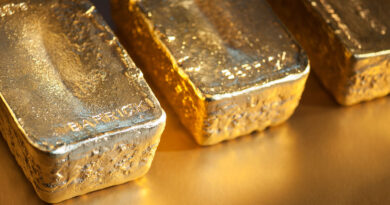Green hydrogen to provide incentive for platinum sector
World Platinum Investment Council in its Platinum Quarterly data set examines activity in the second quarter of 2022. It also includes an updated forecast for 2022.
Despite resilience in the automotive, jewellery and industrial sectors, combined with reduced mining and recycling supply, a reduction in ETF holdings and exchange stocks saw a platinum surplus in Q2’22 of 349 koz, and the forecast 2022 surplus increase to 974 koz.
Q2’22 saw the resurgence of exceptionally strong import volumes into China, significantly above identified demand, which were met largely by sizeable flows from platinum ETFs and exchange stocks. These excess imports into China, which are not captured in published supply and demand data, resulted in physical platinum market tightness. This is evidenced by elevated lease rates, which have remained high, peaking at 10% in May, higher even than those seen at the peak of the pandemic and significantly above the ten-year average. This physical market tightness also incentivised the movement of platinum held by exchanges into the spot market to help meet the China import volumes.
Total platinum supply in 2022 is forecast to decline 8% (-626 koz) year-on-year to 7,514 koz.
The recycling of platinum from spent autocatalysts fell by a noteworthy 20% year-on-year (-82 koz) in Q2’22, with automotive recycling forecast to be down 15% (-210 koz) in 2022.
Automotive demand for platinum grew 8% (+50 koz) year-on-year in Q2’22. Although the semi-conductor shortage is ongoing, it is easing and the year-on-year increase reflects higher vehicle production volumes, higher platinum loadings on heavy-duty vehicle (HDV) aftertreatment systems, particularly in China and increased use of platinum in place of palladium in light duty gasoline vehicles. For full-year 2022, platinum automotive demand is expected to increase by 14% (+376 koz) to 3,015 koz.
Jewellery demand improved by 5% (+26 koz) in Q2’22, with most markets aside from a COVID-impaired China, continuing to grow. This was bolstered, in part, by considerable demand in North America and Europe due to more weddings and platinum’s price remaining well below the price of gold. Platinum jewellery demand for 2022 is forecast to be 1,959koz – a slight increase on 2021.
Industrial demand saw growth in the petroleum (+17%, +7 koz), medical (+8%, +5 koz), and other industrial (+16%, +21 koz) sectors during the quarter, all of which are forecast to grow in 2022 as a whole. The growth in these sectors is masked within the overall industrial demand forecast for 2022 (-15%, -375 koz), as capacity expansions seen in 2021 in the glass and chemical sectors are not repeated this year.
Global bar and coin demand strengthened quarter-on-quarter to 70 koz in Q2’22, driven by North American demand which is set to post a new post-COVID high in 2022 of 292 koz. However, in Japan, high yen-denominated platinum prices continued to encourage profit-taking among investors for the second consecutive quarter – albeit at a lower level to the previous quarter. Full-year total bar and coin investment is forecast to reduce by 14% (-47 koz).
For ETF holdings, recessionary fears, rising interest rates and weaker commodity prices were visible this quarter – mirroring the net sales trends seen in gold and silver ETFs. ETF holdings contracted by 89 koz, albeit significantly less than in the previous quarter. Following this trend, ETF holdings are expected to continue to fall in 2022, declining by a total of 550 koz.
Meanwhile, NYMEX and TOCOM warehouse stocks fell by a combined 123 koz over the quarter. Exchange stocks are forecast to decline by 300 koz for the full year as the physical market tightness and resulting high lease rates, seen in the second quarter, are expected to persist for the rest of the year.
In conclusion, despite considerable headwinds in 2022, pockets of platinum demand strength, particularly in the automotive, jewellery and industrial sectors are promising in both the near- and long-term. Platinum’s role in unlocking hydrogen’s crucial contribution to achieving global net zero targets is becoming widely known and offers an option to investors looking for exposure to this area. The drive in Europe to reduce gas imports from Russia, as well as the recent passing of the US’s Inflation Reduction Act, places greater importance on the need for green hydrogen and provides further incentive for investment in the sector, which benefits platinum directly.



